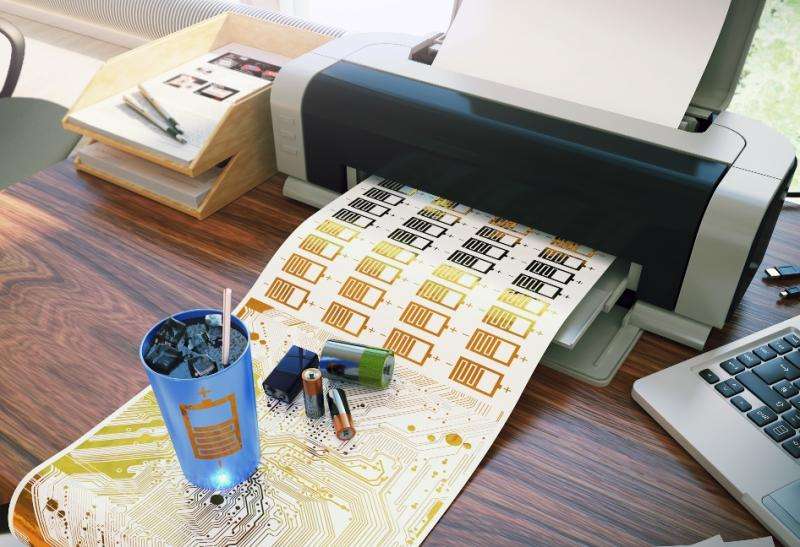Inkjet-printed batteries bring us closer to smart objects

The race is on to develop everyday objects that have network connectivity and can send and receive data: the so-called 'Internet of Things'. But this requires flexible, lightweight and thin rechargeable power sources. Currently available batteries are packaged into fixed shapes and sizes, making them unsuitable for many future needs.
Researchers in South Korea have developed printable supercapacitors that can be incorporated into a wide variety of objects as a power source.
The team, led by Professor Sang-Young Lee from Ulsan National Institute of Science and Technology, developed inks that can be printed onto paper to fabricate a new class of printed supercapacitors.
The process involves using a conventional inkjet printer to print a preparatory coating—a 'wood cellulose-based nanomat'—onto a normal piece of A4 paper. Next, an ink of activated carbon and single-walled nanotubes is printed onto the nanomat, followed by an ink made of silver nanowires in water. These two inks form the electrodes. Finally, an electrolyte ink—formed of an ionic liquid mixed with a polymer that changes its properties when exposed to ultraviolet light—is printed on top of the electrodes. The inks are exposed at various stages to ultraviolet irradiation and finally the whole assembly is sealed onto the piece of paper with an adhesive film.
The process results in a printed supercapacitor with good mechanical flexibility and reliable electrochemical performance. The team used the printed supercapacitor to make a 'smart glass' that responded to a temperature stimulus. The supercapacitor was printed onto the glass in the shape of the words 'hot' and 'cold'. When the glass was filled with hot or cold liquids, a red LED lamp lit up the word 'hot' or a blue LED lamp lit up the word 'cold' respectively.
"Due to the simplicity and scalability of their process and design universality, [these] inkjet-printed supercapacitors … hold substantial promise as a new class of monolithically-integrated flexible power sources that are urgently needed for the forthcoming Internet of Things and flexible/wearable electronics," the researchers conclude in their paper published in the journal Energy & Environmental Science.
Journal information: Energy & Environmental Science





















